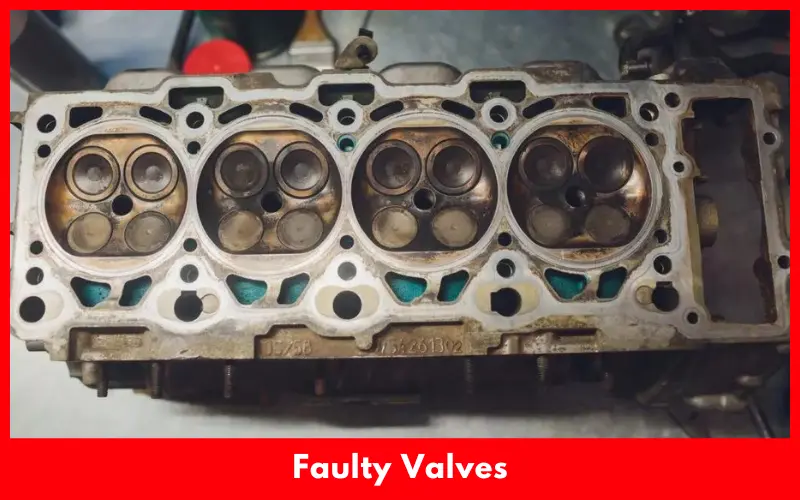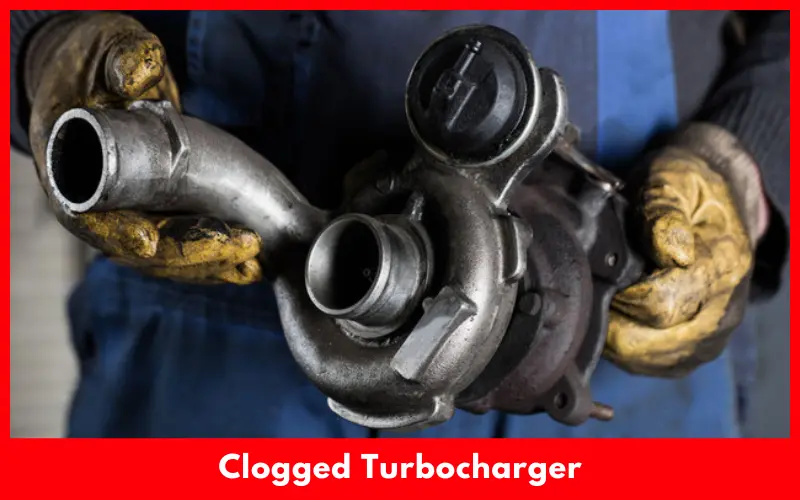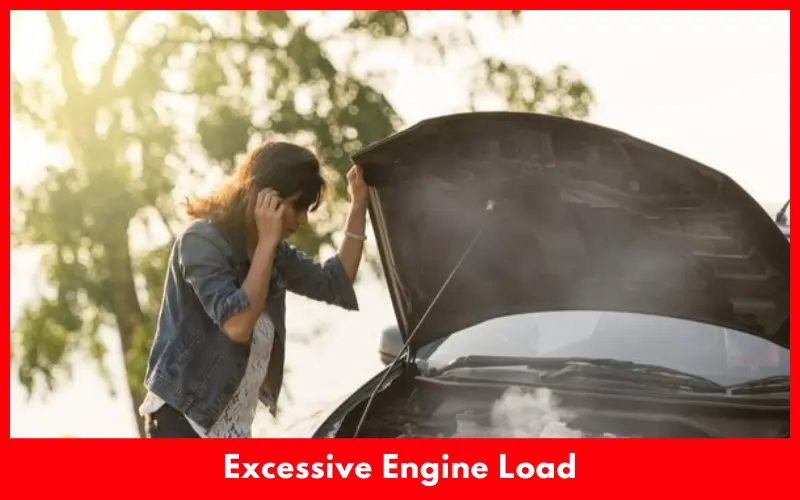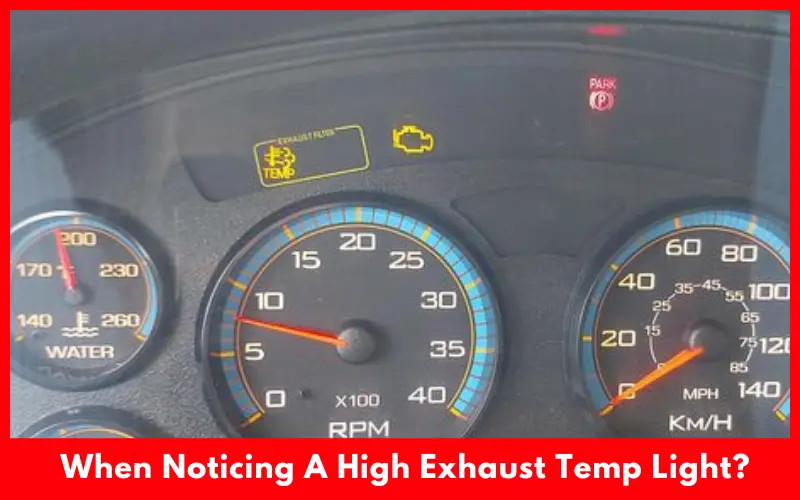High exhaust temperature warning light is a concerning issue for car owners as it can cause incomplete combustion, overheating and damage catalytic converter. So if your exhaust is becoming excessively hot, you should know how to fix high exhaust temperature to avoid these consequences.
In this case, you can slow down and avoid acceleration while driving or stop your car to cool down the exhaust system. You may also need to visit the mechanic shop to clean and fix catalytic converter, ensure proper air-fuel mixture, and repair faulty exhaust valves.
Article Summary
High Exhaust Temperature Warning Light Reasons And Solutions
Below are some of most potential reasons that cause high exhaust temperature along with simple solutions:
1. Improper Air-Fuel Mixture
Gas engines require a 14.7:1 fuel-to-air ratio. An improper fuel-to-air ratio can cause high exhaust temperature which can damage critical engine components. For example, it can damage valves, pistons, cylinders, rings and even the catalytic converter.
Solution
Check the spark plug to determine the fuel-air mixture ratio. If the spark plug looks a bit off-white or very light grey, there is an ideal mixture. If the plug looks bone white, there is too lean an air-fuel mixture. The spark plug may become black if there is too rich a fuel-air mixture. Ethanol in fuel can make the mixture too rich and can damage rubber parts in cars.
To fix this problem, you can use more expensive fuel that doesn’t have ethanol or other strong cleaning stuff. You can also use some inexpensive clever additives.
2. Clogged Catalytic Converter
A clogged catalytic converter limits exhaust flow which can cause heat buildup within the pores of the unit. It can also disturb smooth flow of exhaust through the exhaust system and cause high exhaust temperatures. The symptoms of a clogged catalytic converter are engine stalling, poor fuel efficiency, and check engine light.

Solution
Clean the carbon deposits and other debris from catalytic converter using a cleaner additive. If it doesn’t work, check catalytic converter physically for dents or impact damage and fix them. You may also need to repair or replace spark plug or ignition coils if your car causes high exhaust temperate and engine misfire at a time.
3. Faulty Valves
Exhaust valves allow hot exhaust gases to mix with the incoming air-fuel mixture during the intake stroke. This process is known as exhaust gas recirculation (EGR). But if exhaust valves get damaged or don’t close fully, EGR can occur unintentionally and it can disrupt the combustion process.
Bad ignition or combustion of the mixture causes higher temperatures within the combustion chamber. This can increase temperature and eventually cause high exhaust temperature.

Solution
If a damaged exhaust valve is causing high exhaust temperature, you have to replace the converter to fix the issue. To do this, remove the valve cover and camshaft from the top of engine. Determine the valve that has high exhaust temperatures by looking for any damage. Take the pressure off the valves using a valve spring compressor.
If the valve guide is worn out, replace it. Then place a new exhaust valve and put a bit of valve-lapping compound on its face. Fit the new valve snugly and ensure a good seal using a valve lapping tool. Then reassemble the valve spring, retainers, and collets and put everything back on top of the engine.
4. Clogged Turbocharger
A clogged turbocharger can’t draw enough fresh air for combustion. It causes a lean air-fuel mixture. If so, the combustion process will be hotter than normal. The incomplete combustion of fuel in the engine can also cause higher temperatures in the exhaust gases.

Solution
To fix clogged turbocharger, remove the turbocharger from the intake and exhaust systems. Then visually inspect the turbine and compressor sides of the turbocharger for any visible clogs or deposits. You should also inspect compressor wheel, intercooler and associated pipes as these can clog the turbocharger.
Clean dirt, oil, and carbon deposits from these components using a turbocharger cleaner or degreaser. Use a soft brush or wooden tool to remove stuck carbon buildup. Then inspect the air filter and replace it if there is excessive dirt on it. Finally, reassemble the turbocharger and make sure it fits tightly.
5. Excessive Engine Load
If you tow or carry a heavy load more often, it can cause a high exhaust temperature. This is because heavy load puts excess pressure on the engine and it requires more power to overcome. It creates a higher demand for combustion. The continuous combustion generates high engine temperature within the combustion chamber and causes high exhaust temperatures.

Solution
If you want to avoid high exhaust temperature, don’t tow or carry much load that exceeds your car’s towing capacity or payload capacity. Use a trailer with brakes to carry heavier loads as it can help manage the extra load without putting strain on the towing vehicle.
You can also use an additional transmission cooler to maintain optimal exhaust temperature while towing extra load.
What Should You Do If High Exhaust Temp Light On?
High exhaust temperature won’t cause any immediate issues. So you can continue driving even after noticing high-temperature light. However, you must monitor the regain cycle. After Regen’s cycle kicks, you can continue driving until the cycle finishes. When the regen cycle finishes, the exhaust temp light should turn off automatically.

Alternatively, you can park your vehicle after noticing high temp light. Then you can force Regan to turn off high temp light. If the error light is still on or comes out after a while, it indicates an internal issue related to exhaust system.
If you neglect the problem, it can damage the catalytic converter or the whole exhaust system. So drive your car to the nearest auto repair shop to deeply inspect the catalytic converter, exhaust system, and other related parts. It may cost up to $400 to fix the exhaust problem.
How To Measure Gas Temperatures on Exhaust Systems?
When you are worried about high exhaust temp, you should be able to measure the gas temperature to decide the next step. Below is the simple process:
Find The Right Place
The pyrometer comes with a probe or sensor and display unit. So you should install a pyrometer in a place where it can contact with exhaust gas. You must mount pyrometer securely and place it properly to get the right readings.
Connect Pyrometer
Connect the electrical wires of the sensor to display unit. Read the owner’s manual to ensure proper connection procedures.
Adjust Pyrometer
You’ll have to calibrate pyrometer to get accurate readings. To do so, adjust the tool to match with reference temperature.
Take Measurements
Place the sensor in exhaust gas flow and let it stabilize so you can get an accurate reading. Check the unit of the pyrometer to read temperature.
Analyze Readings
Monitor exhausts temperature continuously using a pyrometer. If you notice exhaust temperature is higher than 700 degrees on diesel-cycle engines, try it to cool down or consult with an expert mechanic.
FAQs
How Hot is Too Hot A Temperature For An Exhaust?
Exhaust temperature usually ranges from 400 to 500. However, based on driving time, exhaust temperature can be reduced to 300 degrees or reach 1000 degrees. If you read 1200 degree temperature, it’s too hot for exhaust.
What Should You Do When Exhaust Temp Light Comes On?
If you notice the exhaust temp light come on, slow down and avoid hard acceleration to reduce engine load. Then carefully drive your car to a mechanic shop to deeply diagnose it and fix possible causes.
Is High Exhaust Temp Bad For The Car?
Yes, high exhaust temperature can damage vital parts of the engine including pistons, rings, and valves. It can also destroy catalytic converters.
Final Words
Hope you understand why exhaust temperature increases excessively and how to fix high exhaust temperature. So if you don’t want engine components damaged, reduce engine efficiency and catalytic converter failure, and maintain proper exhaust temperature.
In this case, try not to carry a heavier load and make sure the exhaust system isn’t clogged. Keep the exhaust system clean and periodically maintenance service your car.


Fixed my exhaust temperature sensor form you guide. It working well now. Thank you.